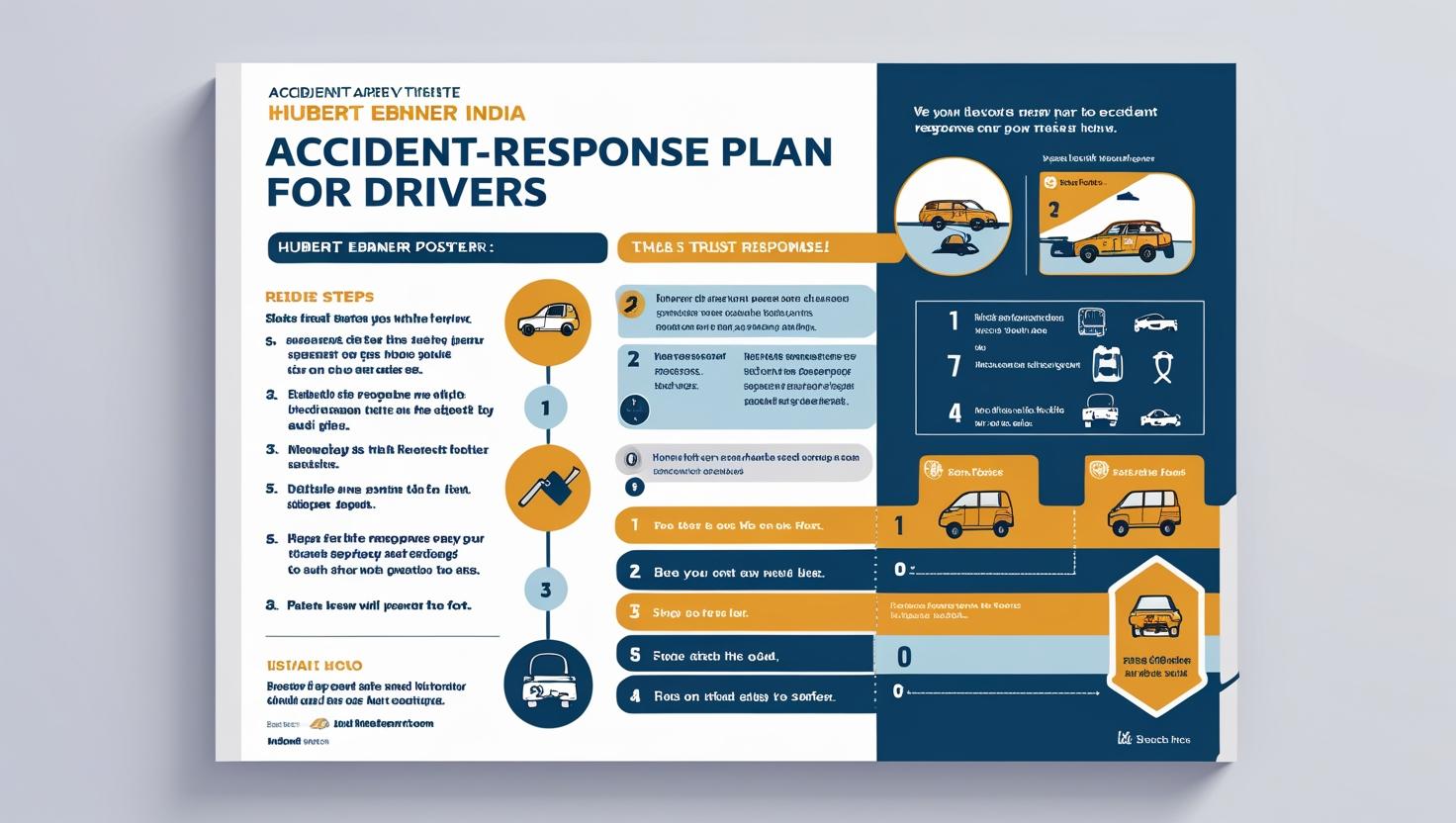Creating an Accident-Response Plan for Drivers
In fleet management, even the most skilled and cautious drivers can face unforeseen incidents. From minor fender-benders to serious collisions, having a clear, well-structured accident-response plan is critical. A plan ensures drivers know exactly what to do in the chaotic moments after an accident, reducing risks, protecting lives, and safeguarding your company’s legal and financial interests.
At Hubert Ebner India, we understand that time lost in confusion can cost lives and escalate damage. Here’s a comprehensive guide to creating an effective accident-response plan for your drivers.
1. Immediate Safety Measures
Purpose: Prioritize human life above all else.
Actions for Drivers:
- Stop the vehicle immediately, without creating additional hazards.
- Switch on hazard lights and place reflective warning triangles to alert other motorists.
- Move to a safe location if possible, but avoid leaving the scene.
2. Check for Injuries and Provide First Aid
Accidents can cause injuries that require urgent attention.
Actions:
- Check yourself, passengers, and other parties for injuries.
- Call emergency services immediately if anyone is hurt.
- Provide first aid if trained, but avoid moving seriously injured individuals unless necessary for safety.
3. Notify Authorities and Your Fleet Manager
Legal compliance and company protocol demand timely reporting.
Actions:
- Call the local police to report the accident.
- Inform your fleet manager or designated company contact as soon as possible.
- Provide accurate location details using GPS coordinates if available.
4. Secure the Accident Scene
Keeping the scene safe helps prevent secondary accidents.
Actions:
- Keep hazard lights on and reflective devices in place.
- Avoid touching or moving vehicles until authorities arrive unless necessary for safety.
- If transporting hazardous materials, follow spill or leak protocols immediately.
5. Document the Incident Thoroughly
Accurate records are vital for insurance and legal purposes.
Actions:
- Take clear photos of all vehicles involved, license plates, damages, skid marks, and road signs.
- Note the date, time, weather conditions, and traffic situation.
- Collect names, contact details, and insurance information of all involved parties and witnesses.
6. Avoid Admitting Fault
Even a casual “sorry” can be interpreted as legal admission.
Actions:
- Stick to factual descriptions of the event.
- Allow police, insurers, and investigators to determine responsibility.
7. Arrange for Vehicle Recovery and Incident Follow-Up
After safety and reporting, secure your assets and plan next steps.
Actions:
- Contact your fleet’s towing or recovery service.
- Complete an internal accident report within 24 hours.
- Participate in a debrief with your safety officer to discuss causes and preventive measures.
8. Post-Accident Support and Training
An accident can be stressful and emotionally taxing.
Actions:
- Offer drivers access to counseling services if needed.
- Provide refresher defensive driving courses to address potential skill gaps.
- Update company safety protocols based on lessons learned.
Conclusion
A well-prepared accident-response plan is not just about compliance—it’s about saving lives, protecting your drivers, and preserving your company’s reputation. By ensuring that every driver understands and regularly practices this plan, your fleet can respond to incidents quickly, efficiently, and safely.
At Hubert Ebner India, we help organizations develop customized accident-response strategies that integrate seamlessly with existing safety programs, ensuring your fleet stays prepared for the unexpected.




